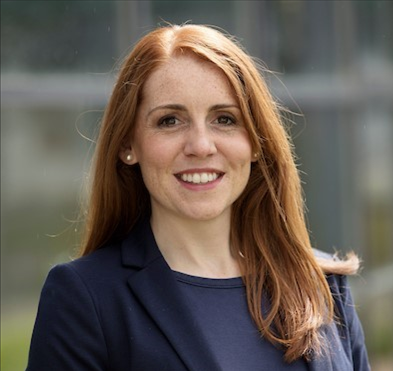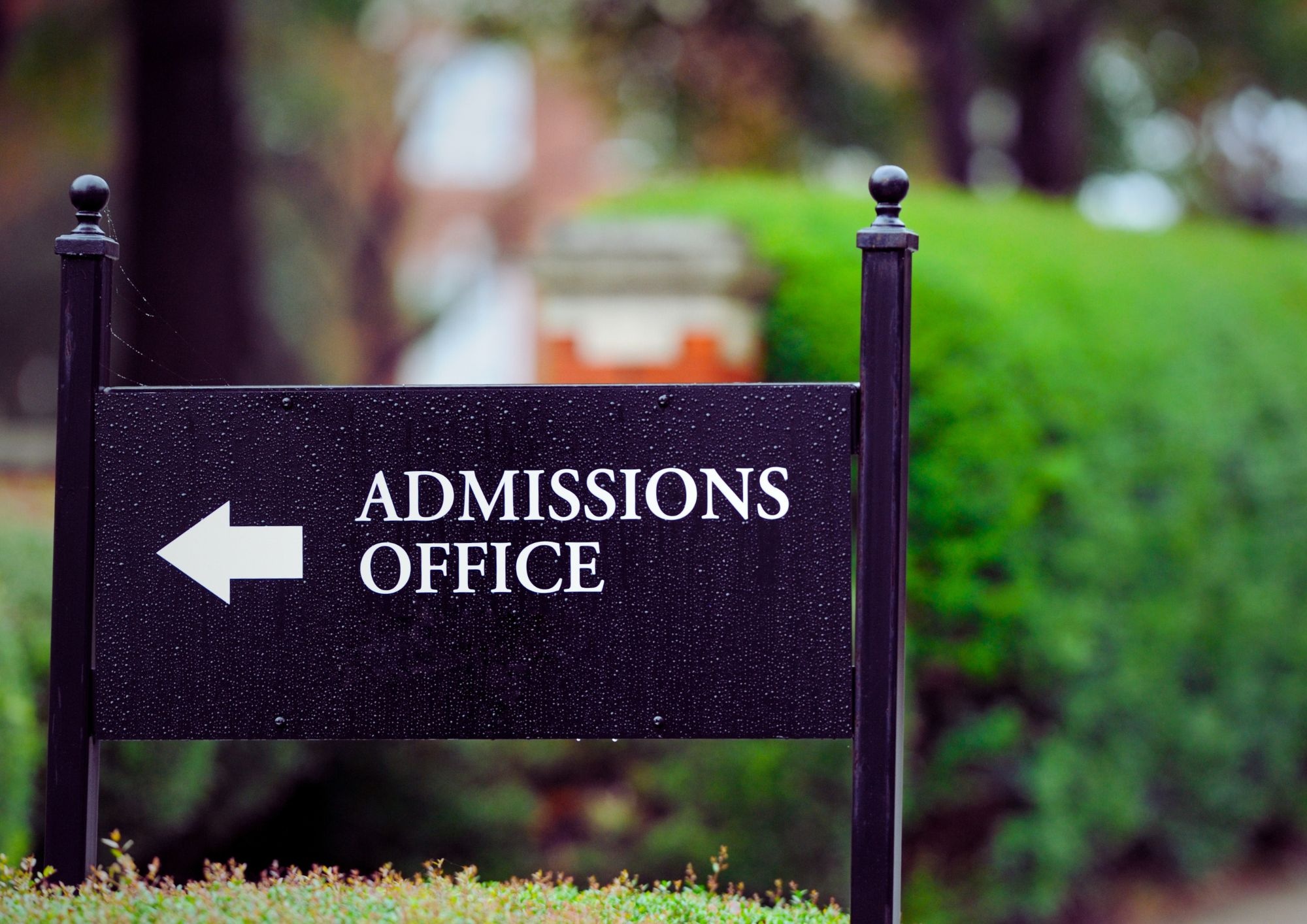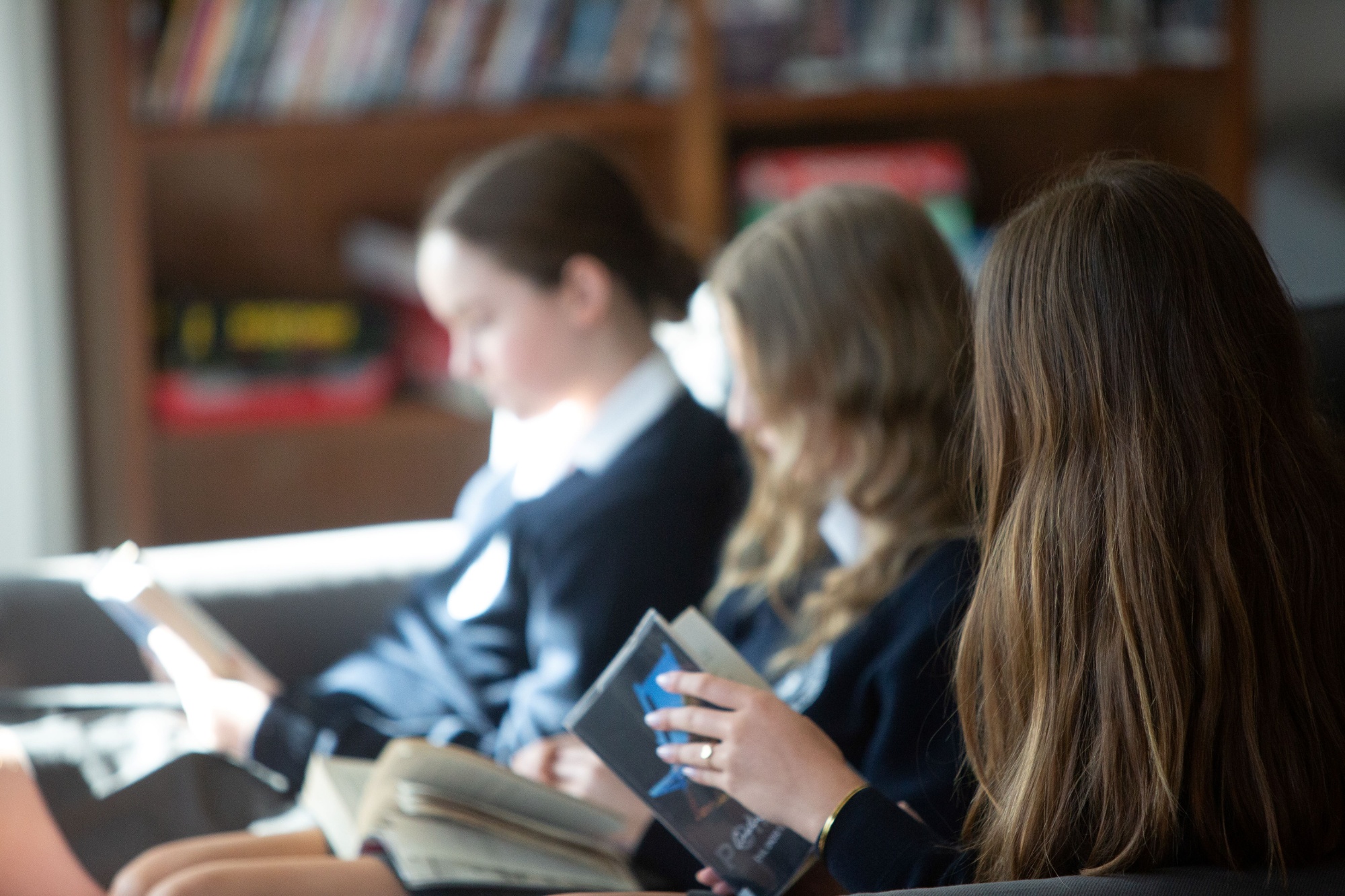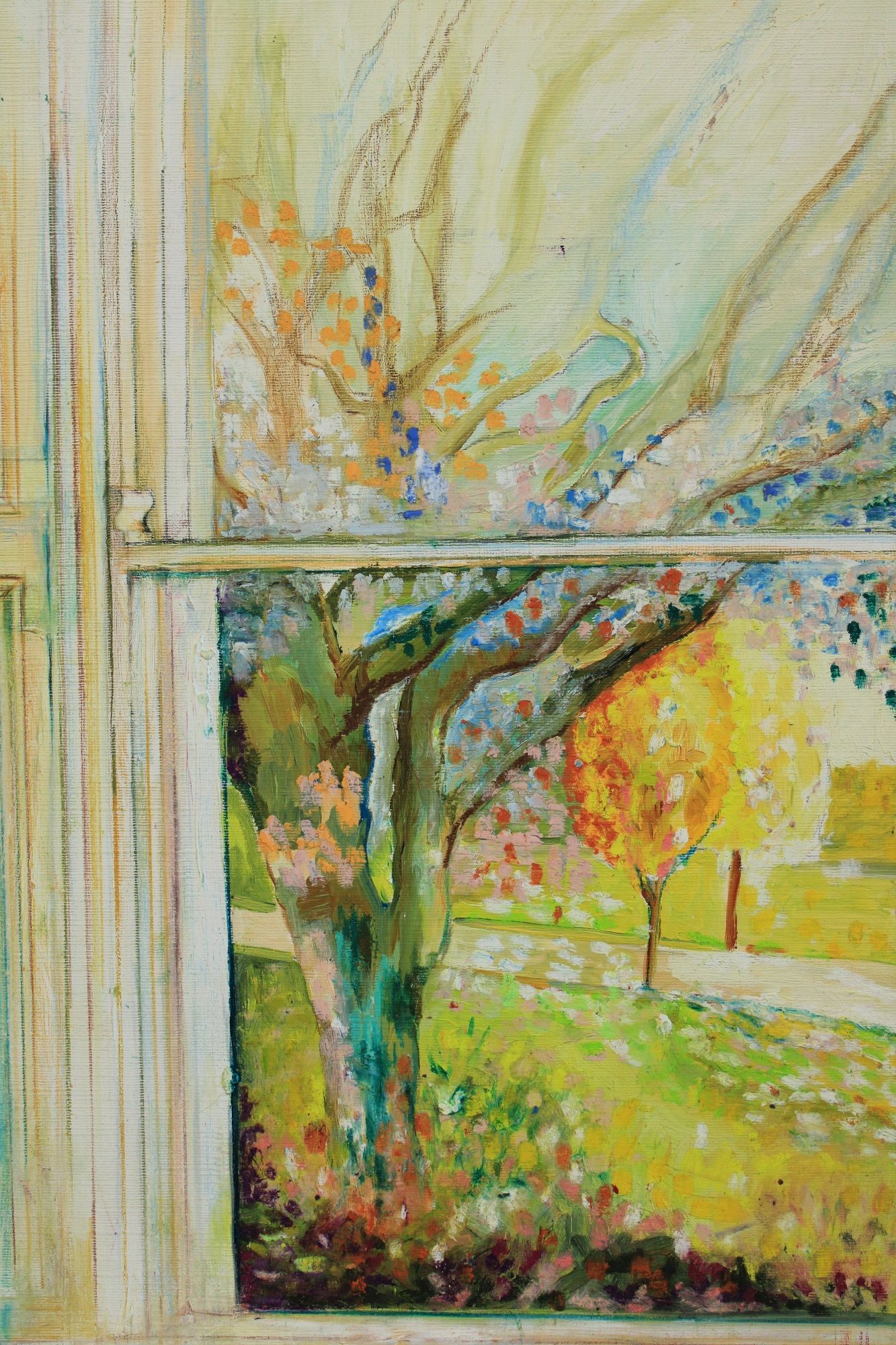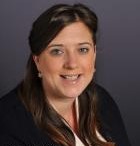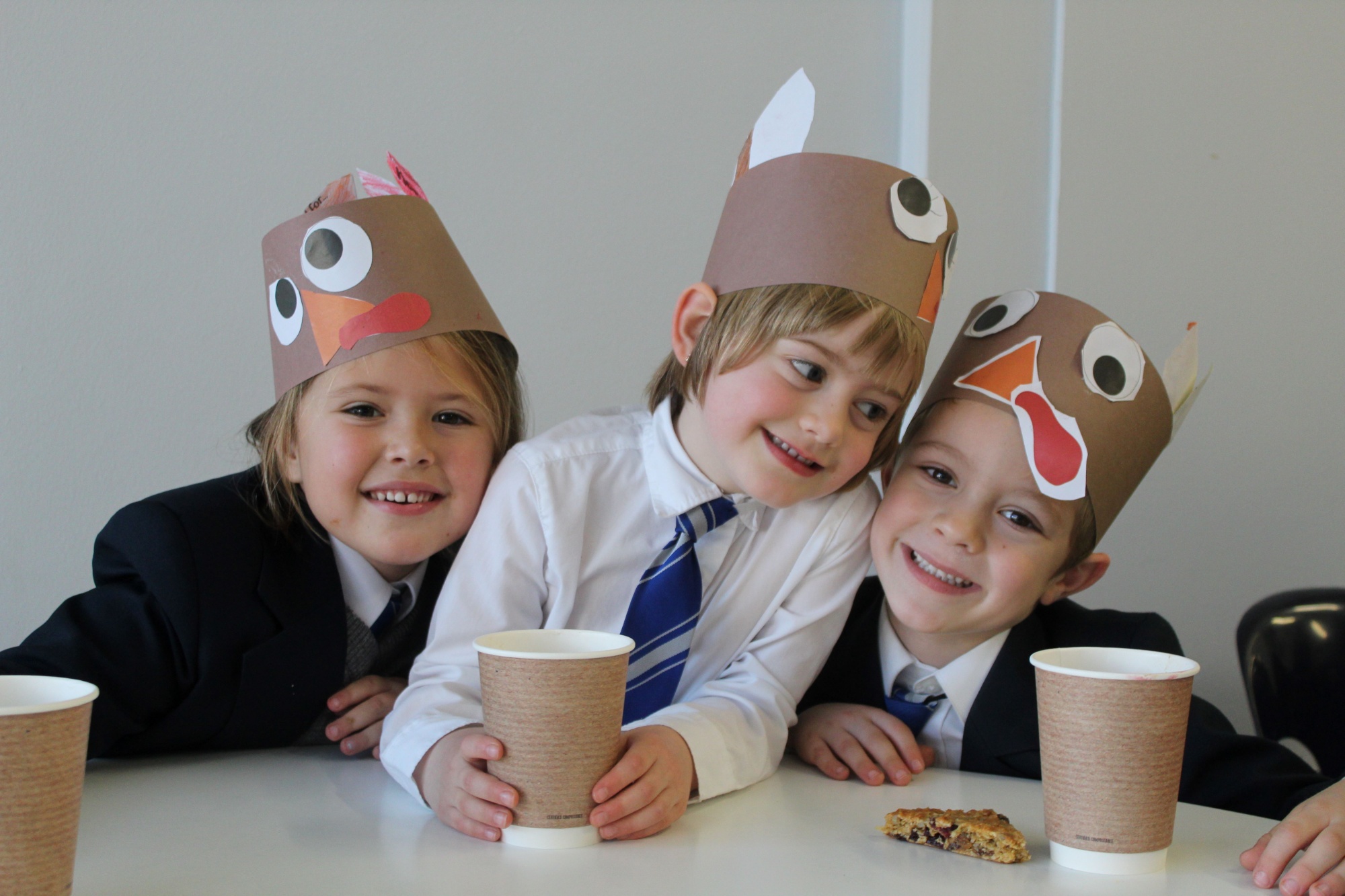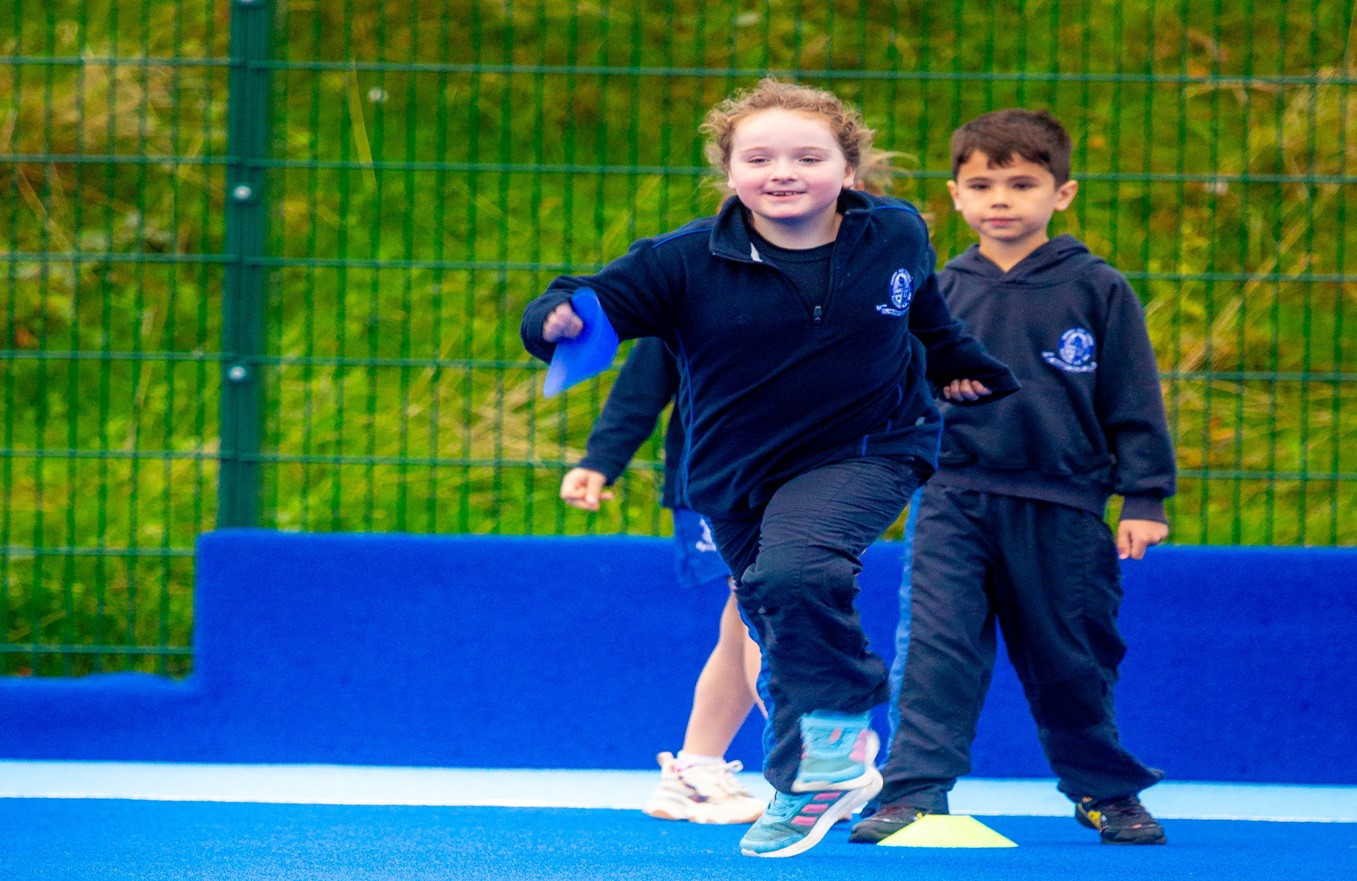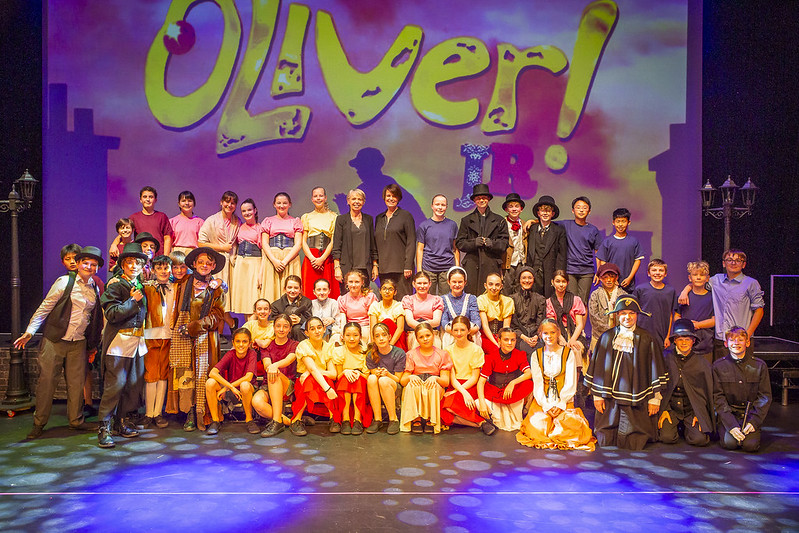Irish
Subject Leader: Mr Dara Keddy
| Irish Teacher's Name | Contact |
| Mr Keddy | dkeddy@st-andrews.ie |
| Ms Lammond | rlammond@st-andrews.ie |
| Mr Mac Giolla Bhride | amacgiollabhride@st-andrews.ie |
| Ms Murphy | tmurphy@st-andrews.ie |
| Ms O'hUadhaigh | sohuadhaigh@st-andrews.ie |
| Ms O'Shea | aoshea@st-andrews.ie |
| Ms Samuels | usamuels@st-andrews.ie |
| Mr Shaughnessy | dshaughnessy@st-andrews.ie |
An Ghaeilge i gColáiste Naomh Aindriú
Is í an Ghaeilge céad teanga oifigiúil Phoblacht na hÉireann. De ghnáth is í an teanga an ghné is tábhachtaí a dhéanann idirdhealú i gcúltúr. Mar sin, glacann an Ghaeilge páirt lárnach in aitheantas cúltúrtha náisiúnta na hÉireann. Tá Gaeilge ag dul trí athrú mór i láthair na huaire. Tá níos mó daoine ábalta an teanga a labhairt agus a scríobh na leathanta seo ná riamh. Tá níos mó leabhar, irisleabhar agus páipéar nuachtán foilsithe trí mheán na Gaeilge um chéad seo ná i stair iomláin na teanga. Is féidir croaltaí i nGaeilge a chloisint go laethúil ó staisiúin raidió, Raidió na Gaeltachta agus Raidió na Life.I 1996 thosaigh stáisiún teilifís na Gaeilge, TG4, ag craoladh nuacht, cláir fháisnéise, cláir do pháistí agus sobalchláir as Gaeilge. Tá tábhacht faoi leith ag baint lenár dteanga a choimeád ó thaobh na féiniúlachta de toisc ár mballraíocht san Aontas Eorpach. Tá teanga na Gaeilge ag éirí níos tábhachtaí maidir lenár bhféiniúlacht náisiúnta mar aon lena cáil i meas Éireannach thar lear.Tá cothú teanga na Gaeilge le sonrú ar fud na scoile i gColáiste Naomh Aindriú. Tá idir phostaeir, thionscadail agus phictiúir le feiscint ar na ballaí mar thoradh ar obair na ndáltaí agus múinteoirí Roinn na Gaeilge. Bíonn taithí shuimiúil, dhúshlánach agus thaitneamhach ag na daltaí i leith foghlaim na teanga sa choláiste. Bíonn ar dhaltaí obair a dhéanamh ar tionscadail, saothair agus gníomhaíochtaí a chabhraíonn le forbairt a scileanna léitheoireachta, scríbhneoireachta, labhartha agus éisteachta.
An Teastas Sóisearach
Tá siollabas Gaeilge an teastais shóisearaigh dírithe ar fhorbairt d’éisteacht, labhairt agus scríbhneoireacht agus scrúdaítear é ag gnáthléibhéal agus ardleibhéal. Bíonn cúig thréimhse Gaeilge gach seachtain. Beidh ar dháltaí scrúdú a dhéanamh(ag brath ar leibhéal) ar a scileanna cluastuisceana, scríbhneoireachta agus litríochta. Beidh réimse ábhar idir láimhe acu, cárta poist a scríobh, díospóireacht a chruthú, fógra a léamh agus ceisteanna ar phíosa filíochta a fhreagairt. Bíonn an chluastuiscint le déanamh ag an am céanna leis na páipéir scríofa agus bíonn ullmhúchán maith riachtanach. Cuidíonn an cúrsa trí bliana le gníomhaíochtaí ar nós Seachtain na Gaeilge, am a mbíonn daltaí ag glacadh páirt i gcomortais, tráth na gceist agus a lán imeachtaí spraoíonna. Molaimid go nglacann na daltaí lánpháirt sa teanga, mar sin ba chóir dóibh dul ar thuras chun na Gaeltachta.
An Idirbhliain
Tugann an Idirbhliain deis níos mó béime a chur ar labhairt na teanga agus ar thimpeallacht chruthaitheach a thugann tacaíocht dí. Bíonn ceithre thréimhse in aghaidh na seachtaine. Go gineálta, cuidíonn úsáid na dtionscadal go mór le bunús cumarsáide mar aon le díospóireachtaí, drámaí, comórtais na teanga Gaeilge, ceardlanna filíochta s.rl. Tá béim níos láidre dírithe ar thionscadail i gcultúr agus stair na hÉireann. Tá béim curtha ar éisteacht le cláir raidió agus féachaint ar chláir theilifíse as Gaeilge. Tá rang cultúrtha ar fáil do dhaltaí nach nglacann páirt i staidéar na teanga ach a bhfuil suim acu foghlaim faoi chultúr agus oidhreacht na hÉireann.
An Ardteistiméireacht
Tá Gaeilge na hArdteistiméireachta éigeantach do na daltaí ar fad (ach amháin iadsan le saoirseacht iomláin an Roinn an Oideachais). Tá cúig thréimhse acu gach seachtain. Tá cúrsa na hArdteist tar éis claochú suntasach a bheith aici agus tá an cúrsa seo a reachtáil don chéad uair do dháltaí na hArdteiste 2012. Tháinig an leasú seo i bhfoirm athdháilte marcanna. Mar thoradh ar seo beidh 40% de mharcanna na ndaltaí ag dul don bhéalscrúdú. Beidh ar na daltaí páirt a ghlacadh i gcomhrá fiche nóiméad ar fhad i dtimpeallacht suaimhneach faoi ábhair chóngarach dóibh féin, mar shampla clann, caitheamh aimsire, saol na scoile s.rl. Beidh 10% ag dul do scileanna cluastuisceana. Tá sé tábhacht do na daltaí gnéithe cúltúrtha agus oidhreachta na teanga a fhoghlaim tríd na giotaí próis agus filíochta.Le linn an chúrsa seo déanann na dáltaí forbairt ar na ceithre scileanna teanga. Is iad seo labhairt, léitheoireacht, éisteacht agus scríbhneoireacht. Tá baint ag na ceithre scil seo lena chéile agus tá tábhacht faoi leith ag baint leo i ngach rang.I rith na sraithe sinsir glacann gach dálta páirt i ngníomhaíochtaí éagsúla, mar shampla díospóireachtaí, drámaí, mar aon le himeachtaí difriúla le linn Seachtain na Gaeilge. Bíonn Roinn na Gaeilge ag déanamh iarrachta leanúnacha an Ghaeilge a chur chun cinn ar fud na scoile agus teanga labhartha beo a chruthú do dhaltaí agus múinteoirí araon.
Irish in St. Andrew’s College
“Beatha teanga í a labhairt”
Irish is the first official language of the republic of Ireland and it is also an official language of the EU. Irish plays a major role in the Irish national cultural identity. The language is currently going through a major change with more and more people being able to speak and write Irish today than that of years gone by. More books, newspapers and magazines have been published in Irish in the past century than in the entire history of the language. Irish language broadcasts can now be heard daily from radio stations such as Raidió na Gaeltachta and Raidió na Life. In 1996, the Irish language television station, Teilifís na Gaeilge, (TG4) started broadcasting news documentaries, children’s shows and even soap operas ‘as gaeilge’. Ireland’s entry into the EU has highlighted Ireland’s need to maintain its unique identity through its language. Irish is becoming more and more a part of the Irish national identity as well as gaining increasing popularity with both Irish and non-Irish abroad.
In St. Andrew’s College, the promotion of the Irish language is evident throughout the entire college with posters, projects and pictures compiled by students and the 8 teachers that make up the Irish Department. Students embark on an interesting and challenging but enjoyable study of Irish language in the college. In doing so, they are met with projects, assignments and activities which all endeavour to develop their oral, aural, reading and writing skills. Cultural trips, theatre trips, debating etc. are all integral parts of the study of Irish at St. Andrew’s to ensure that Irish is a living spoken language for students and teachers alike.
Junior Certificate
The Irish syllabus at Junior Certificate level is aimed at developing listening, speaking and writing skills and it is examined at higher and ordinary level. There are five periods of Irish each week. Students will be tested (depending on level) on a combination of aural, written, and literature skills. These range from writing a postcard to conducting a debate, reading a notice to commenting on a piece of poetry never seen before. The aural exam (Triail Chluastuisceana) takes place at the same time as the written papers and requires good preparation. This three year course lends itself well to activities such as Seachtain na Gaeilge where students take part in table quizzes, competitions and lots of fun events. As is the case with all of St. Andrews students, we highly recommend that all students immerse themselves fully in the language. On this basis, we strongly suggest that everyone should experience a trip to the Gaeltacht.
Transition Year
Transition Year offers an opportunity to place increased emphasis on speaking the language and on creating environments which support this approach. There are four periods a week. In general, the use of projects will greatly help to provide the basis for spoken and written communication, including participation in debates, dramas, Irish language competitions, poetry workshops etc.Particular attention is focused on projects in Irish culture and History following trips to the Gaeltacht. Emphasis is placed on listening to radio and television programs in Irish. Transition year also offers a ‘Culture class’ for students who do not participate in the study of the language but who wish to learn about the culture and heritage of Ireland.
Leaving Certificate
Irish is obligatory for all students at Leaving Certificate level with the only exception being those students who have full Department of Education exemptions. There are five periods each week. This course underwent a significant but welcome change for the Leaving Certificate students of 2012 and consecutive years. Reform has come about in the redistribution of marks which will result in 40% of student’s overall mark being allocated to the oral exam. This 40% rests heavily on the student’s ability to partake in a 20 minute conversation about matters close to their everyday lives. 10% of their grade will be allocated to the aural exam. It is important for students to learn about Irish culture and heritage through poetry and prose passages. Students are immersed in the language to develop the four main language skills – listening, speaking, reading and writing. These four skills form an integral part of each class. Students are involved in activities throughout the year such as debating, drama and activities centered on Seachtain na Gaeilge.

